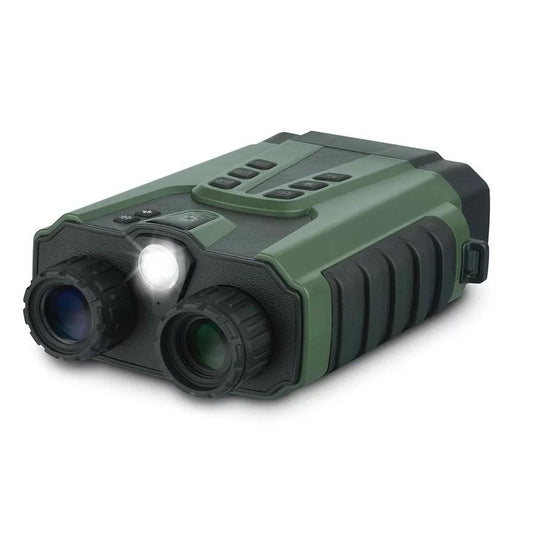

Night vision binoculars utilize advanced image intensification technology to provide clear visuals even in complete darkness. With a true resolution of 1920x1080 pixels, these binoculars deliver excellent image quality, making nighttime observations straightforward. The zoom capability ranges from 1.5x to 12x, allowing for flexible viewing options depending on your needs. Whether you're observing wildlife at night or exploring dark environments, these binoculars ensure that you won’t miss a detail, thanks to their powerful infrared illuminator.
Features:
- HIGH RESOLUTION for crisp visuals in low light.
- POWERFUL ZOOM allows detailed observation from various distances.
- BUILT-IN IR ILLUMINATOR enhances visibility in total darkness.
- PHOTO AND VIDEO FUNCTION lets you capture and share your experiences.
- RECHARGEABLE BATTERIES provide convenience and longevity during use.
- TRIPOD ATTACHMENT compatible for stable, hands-free viewing.
- DAYLIGHT VISION FILTER improves clarity during daytime use.
- LANGUAGE SOFTWARE options support global users for easy navigation.
Technical Specifications Table
| Specification | Details |
|---|---|
| Magnification | 1.5x-12x |
| Resolution | 1920x1080 pixels |
| IR Illuminator | Built-in |
| Power Source | Two rechargeable lithium batteries |
| Distance Range | Up to 400 meters (450 yards) |
| Dimensions | Compact size for portability |
| Included Storage | 8 GB SD card |
What's in the Box?
- Konus 1.5x-12x HD Zoom Digital Night Vision Binocular
- USB cable for charging
- 8 GB SD card for photo/video storage
- User manual for easy setup and operation
Customer Reviews
“These binoculars are impressive for nighttime use. The IR illuminator really makes a difference!”
“The photo and video feature is great for documenting my adventures. Highly recommend!”
“Easy to use and the battery life lasts longer than I expected. A solid investment.”
FAQ
How does the night vision work? The Konus night vision binoculars use advanced image intensification technology, which amplifies available light to produce clear images in low-light conditions. The built-in infrared illuminator further enhances visibility in complete darkness.
Can I use them during the day? Yes, these binoculars come with a daylight vision filter that allows for daytime use without damaging the optics. This feature ensures that you can use them in various environments.
How do they compare to other night vision binoculars? These binoculars offer a competitive combination of high resolution, zoom capability, and built-in photo/video functionality, making them a versatile choice for both casual users and serious enthusiasts.
Similar Models
Explore our complete collection of night vision optics, including models like the Konus 3x-12x Night Vision Monocular for a more compact option and the Konus 7x50 Night Vision Binocular for enhanced stability. Each model is designed to meet specific needs, ensuring you find the right fit for your outdoor adventures.
You May Also Like
Here’s some of our most similar products people are buying. Click to discover trending style.






